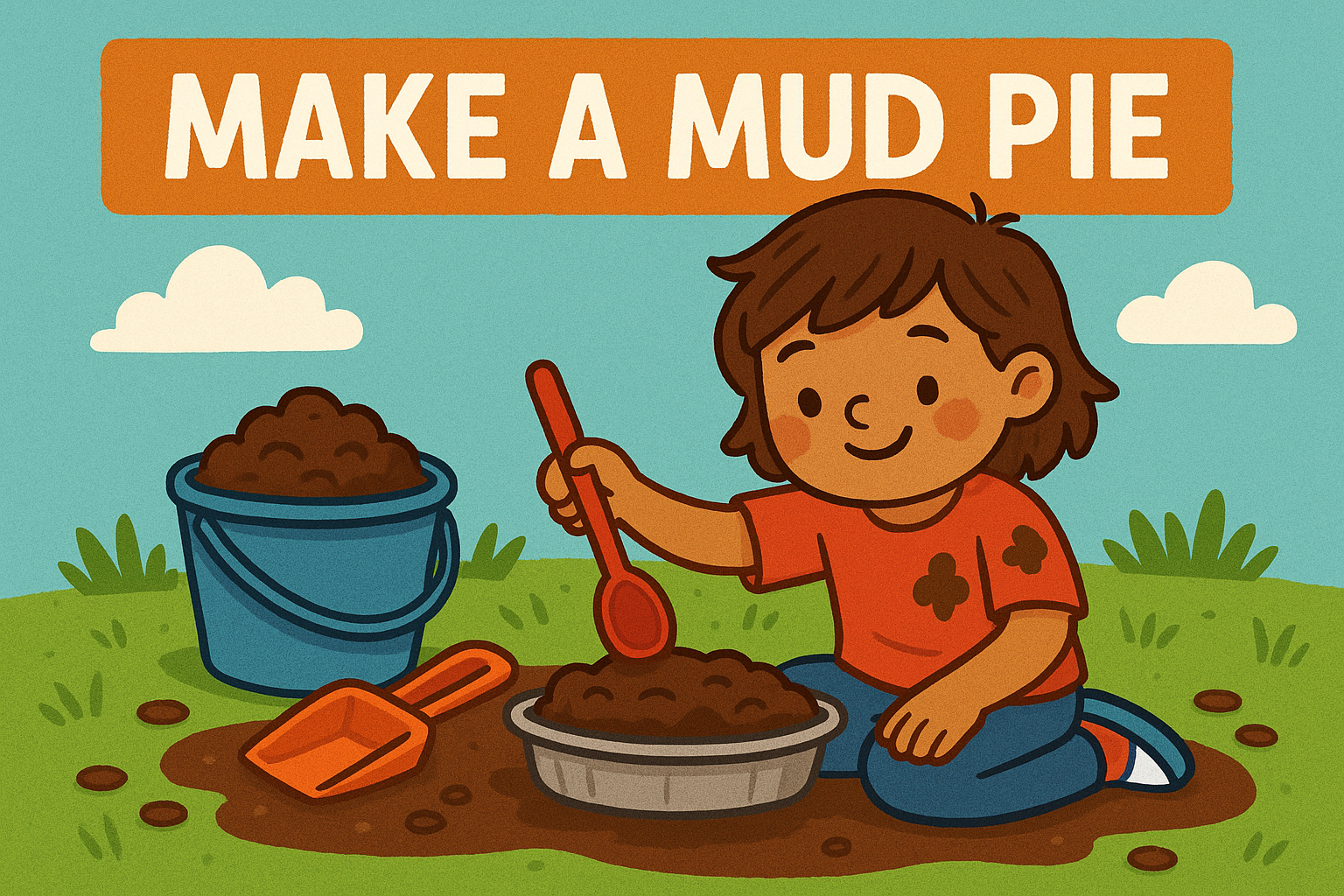Making mud pies is one of those beautifully simple activities that invites children to get stuck in, use their imagination, and connect with the outdoors.
There’s no right or wrong way to do it—just scooping, stirring, decorating, and a whole lot of joyful mess.
It’s a great opportunity for sensory play and imaginative role-play, whether your child is running a pretend bakery or creating magical nature potions.
Best of all, it uses materials that are easy to find and encourages children to explore the textures and patterns of the natural world.
Materials Needed
- Soil or mud (a damp patch of garden or potting soil in a tray)
- Water
- Old bowls, pots, spoons or kitchen utensils
- Leaves, flower petals, sticks, stones for decoration
Tools Needed
- Watering can, jug, or small bucket
- Trowel or large spoon (optional)
Steps
- Choose a Mud Pie Spot
Set up in the garden, a corner of the park, or even on a waterproof mat with a tray of soil if you don’t have outdoor space. - Mix It Up
Add water to the soil to create lovely, squishy mud. Let children feel the texture and adjust the mix themselves. - Shape and Decorate
Use old bowls or pots as “pie tins” and decorate with leaves, petals, or pebbles. - Serve and Pretend
Encourage pretend café play, magic spells, or nature-themed creations—wherever their imagination takes them. - Let It Be
There’s no need for a perfect pie. It’s all about the process, not the result.
Variations
- Nature Bakery: Create a menu of mud cupcakes, pebble biscuits, and leaf lasagne.
- Birthday Mud Cake: Add stick “candles” and sing happy birthday to a favourite toy.
- Outdoor Café: Set up a pretend café with a name, menu, and “customers” (toys or carers).
- Potion Play: Add petals, herbs or coloured water and turn it into a potion-making lab.
Safety Tips
- Always supervise young children during messy play, especially around water and natural materials.
- Make sure hands are washed thoroughly afterwards—especially before eating.
- Use clean soil and avoid muddy areas where pets or wildlife may have been.
- Encourage children not to touch their face or mouth during the activity.


Leave a Reply